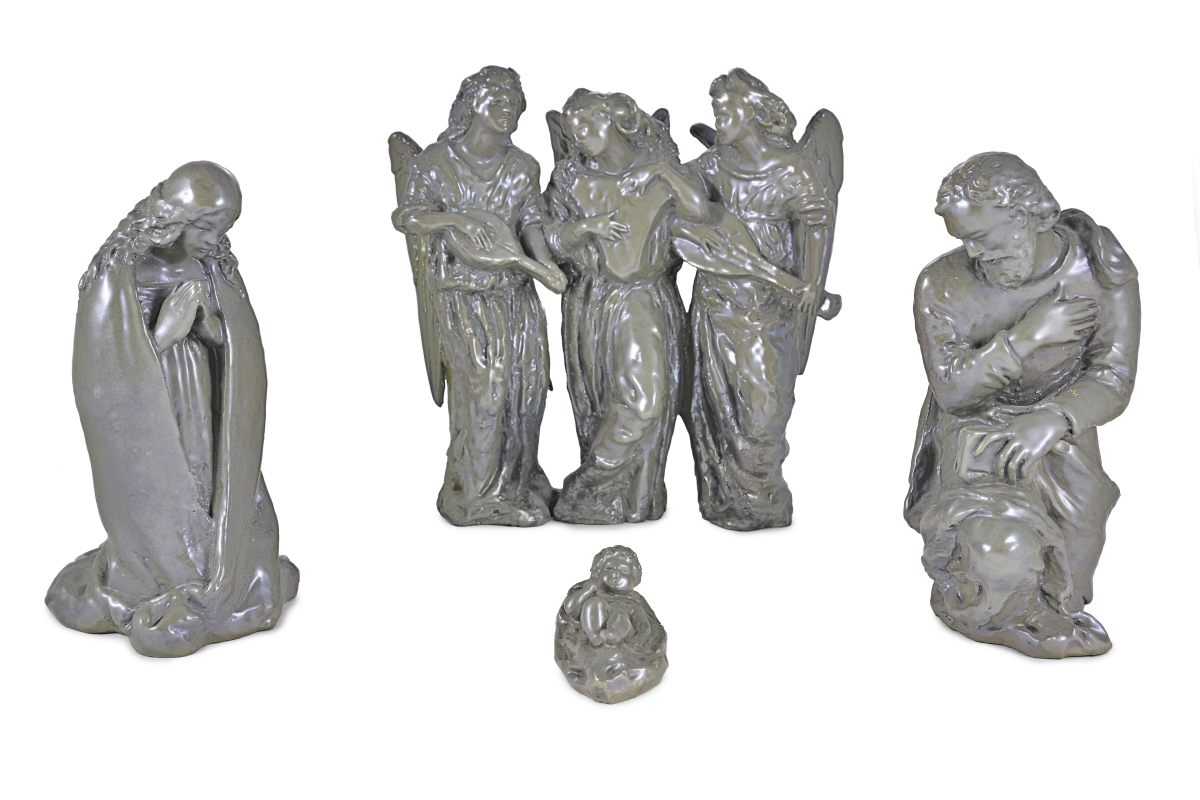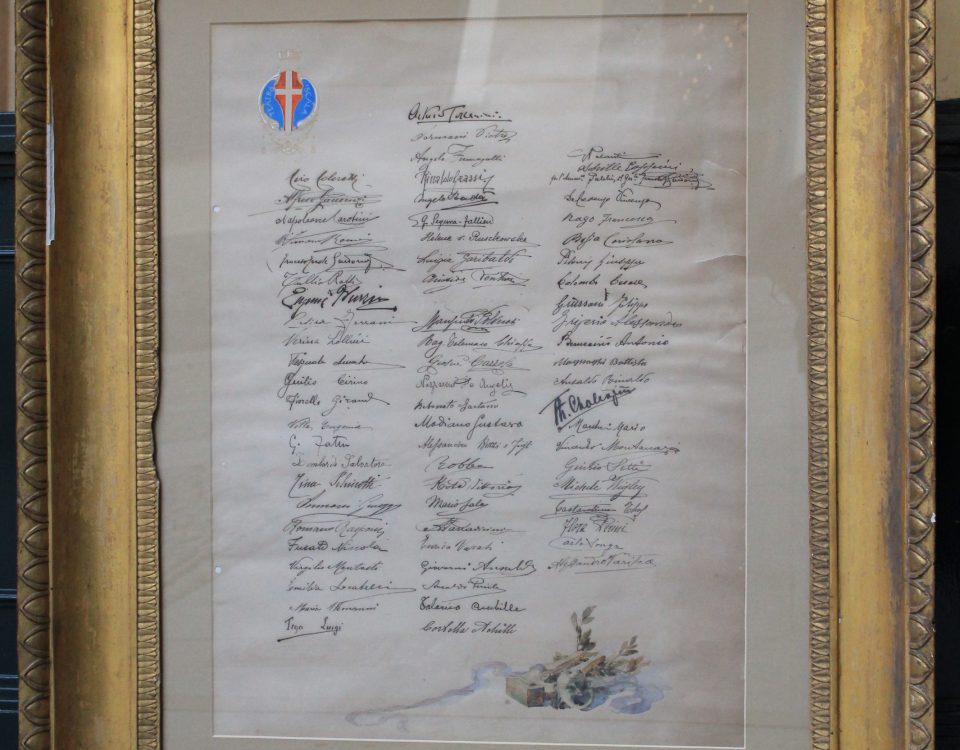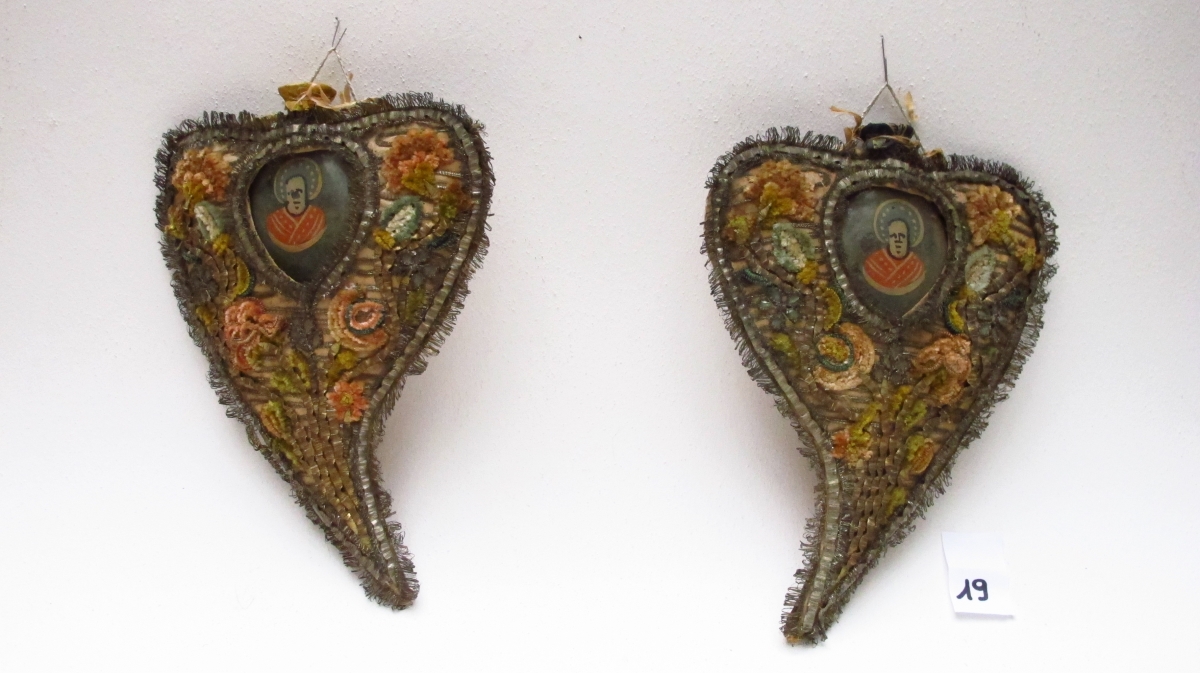
Un cuore per la manna di San Nicola
1 Dicembre 2016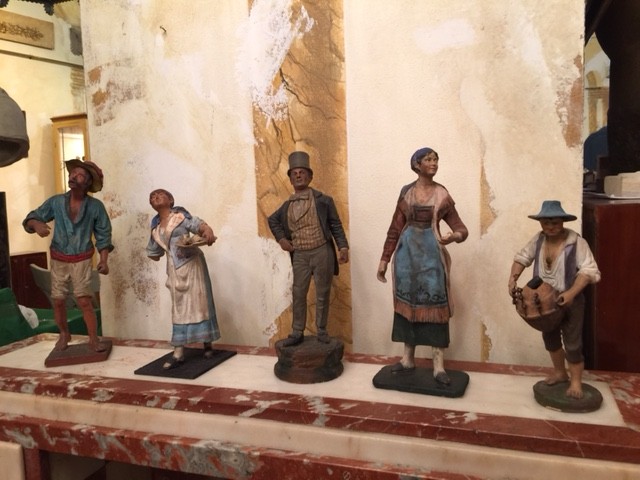
Frammenti di Natale
22 Dicembre 2016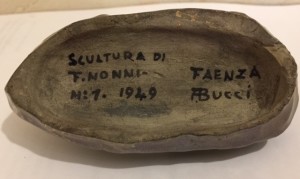 Come ogni anno in Galleria Baroni appare il presepe in ceramica faentina firmato Nonni e Bucci. E’ composto dalla sacra famiglia – Gesù Bambino, Maria e San Giuseppe – con tre angeli musicanti. Il gruppo è stato plastificato da Francesco Nonni (1885 – 1976) incisore, pittore e ceramista faentino, e ceramicato da Anselmo Bucci (1887 – 1959) pittore, incisore e grande tecnico della pasta e della cottura della materia ceramica. Ogni pezzo è firmato alla base da questi due noti artisti faentini, datato 1949 e numerato 1. Un presepe simile è custodito al Museo di Faenza, numerato 3 e composto da più statuine rispetto al nr. 1. Sono tre in tutto i presepi realizzati a firma Nonni – Bucci, ma del numero 2 non si ha traccia. Una caratteristica interessante è che le figure sono state realizzate con un colore grigio “a lustro”, sia quelle del gruppo nr. 1 sia quelle del gruppo nr. 3, affini ma non identiche, in quanto modellate singolarmente e non prodotte a stampo. Il presepe in Galleria Baroni è composto anche da due angeli di un color bianco sfumato firmati sul retro Tamburini, un bravo ceramista della stessa fabbrica, ma non all’altezza di Nonni e Bucci.
Come ogni anno in Galleria Baroni appare il presepe in ceramica faentina firmato Nonni e Bucci. E’ composto dalla sacra famiglia – Gesù Bambino, Maria e San Giuseppe – con tre angeli musicanti. Il gruppo è stato plastificato da Francesco Nonni (1885 – 1976) incisore, pittore e ceramista faentino, e ceramicato da Anselmo Bucci (1887 – 1959) pittore, incisore e grande tecnico della pasta e della cottura della materia ceramica. Ogni pezzo è firmato alla base da questi due noti artisti faentini, datato 1949 e numerato 1. Un presepe simile è custodito al Museo di Faenza, numerato 3 e composto da più statuine rispetto al nr. 1. Sono tre in tutto i presepi realizzati a firma Nonni – Bucci, ma del numero 2 non si ha traccia. Una caratteristica interessante è che le figure sono state realizzate con un colore grigio “a lustro”, sia quelle del gruppo nr. 1 sia quelle del gruppo nr. 3, affini ma non identiche, in quanto modellate singolarmente e non prodotte a stampo. Il presepe in Galleria Baroni è composto anche da due angeli di un color bianco sfumato firmati sul retro Tamburini, un bravo ceramista della stessa fabbrica, ma non all’altezza di Nonni e Bucci.
Ed eccolo allestito in galleria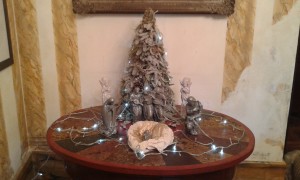
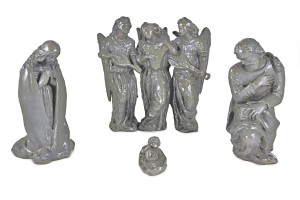 Like every year at Baroni Gallery appears highly glazed ceramic nativity signed Nonni and Bucci. It is composed of the Holy Family – Baby Jesus, Mary and Joseph – with three musical angels. The group has been plasticized by Francesco Nonni (1885 – 1976) engraver, painter and ceramist from Faenza, and ceramic inner Anselmo Bucci (1887 – 1959) painter, engraver and technical of ceramics. Each piece is signed on the basis of these two well-known artists from Faenza, dated 1949 and numbered 1. A similar crib is kept at the Museum of Faenza, numbered 3 and with more statuettes than the nr. 1. The cribs signed Nonni – Bucci are three, but the of number 2 we have no trace. An interesting feature is that the statuettes are in grey ceramic “a lustro”. The two groups (nr. 1 and nr. 3) are similar but not identical, as modeled individually and not produced in the mold.
Like every year at Baroni Gallery appears highly glazed ceramic nativity signed Nonni and Bucci. It is composed of the Holy Family – Baby Jesus, Mary and Joseph – with three musical angels. The group has been plasticized by Francesco Nonni (1885 – 1976) engraver, painter and ceramist from Faenza, and ceramic inner Anselmo Bucci (1887 – 1959) painter, engraver and technical of ceramics. Each piece is signed on the basis of these two well-known artists from Faenza, dated 1949 and numbered 1. A similar crib is kept at the Museum of Faenza, numbered 3 and with more statuettes than the nr. 1. The cribs signed Nonni – Bucci are three, but the of number 2 we have no trace. An interesting feature is that the statuettes are in grey ceramic “a lustro”. The two groups (nr. 1 and nr. 3) are similar but not identical, as modeled individually and not produced in the mold.

